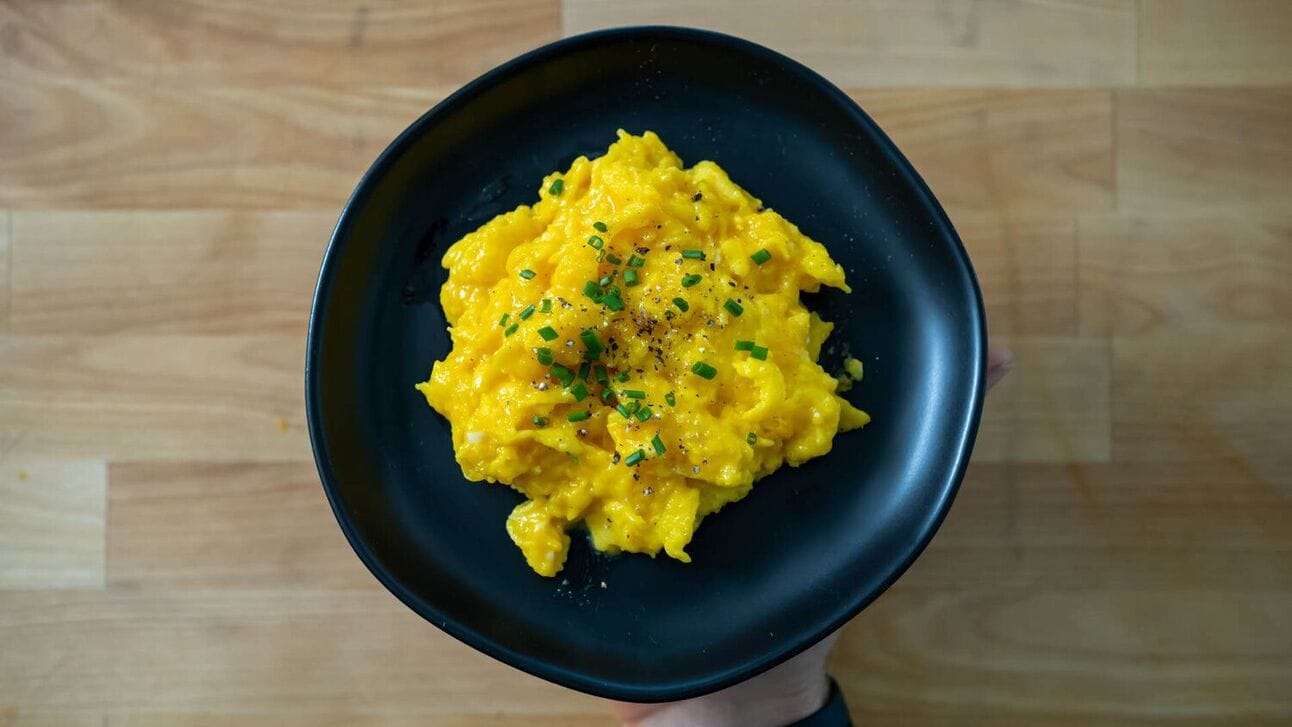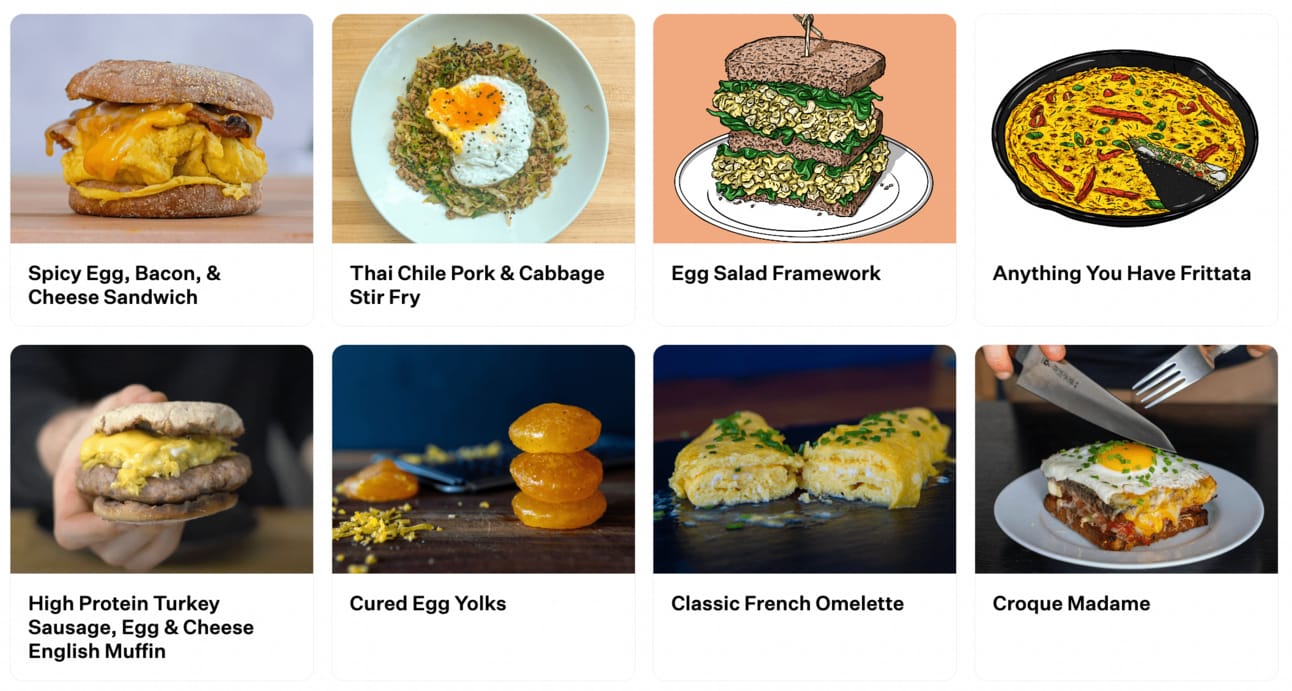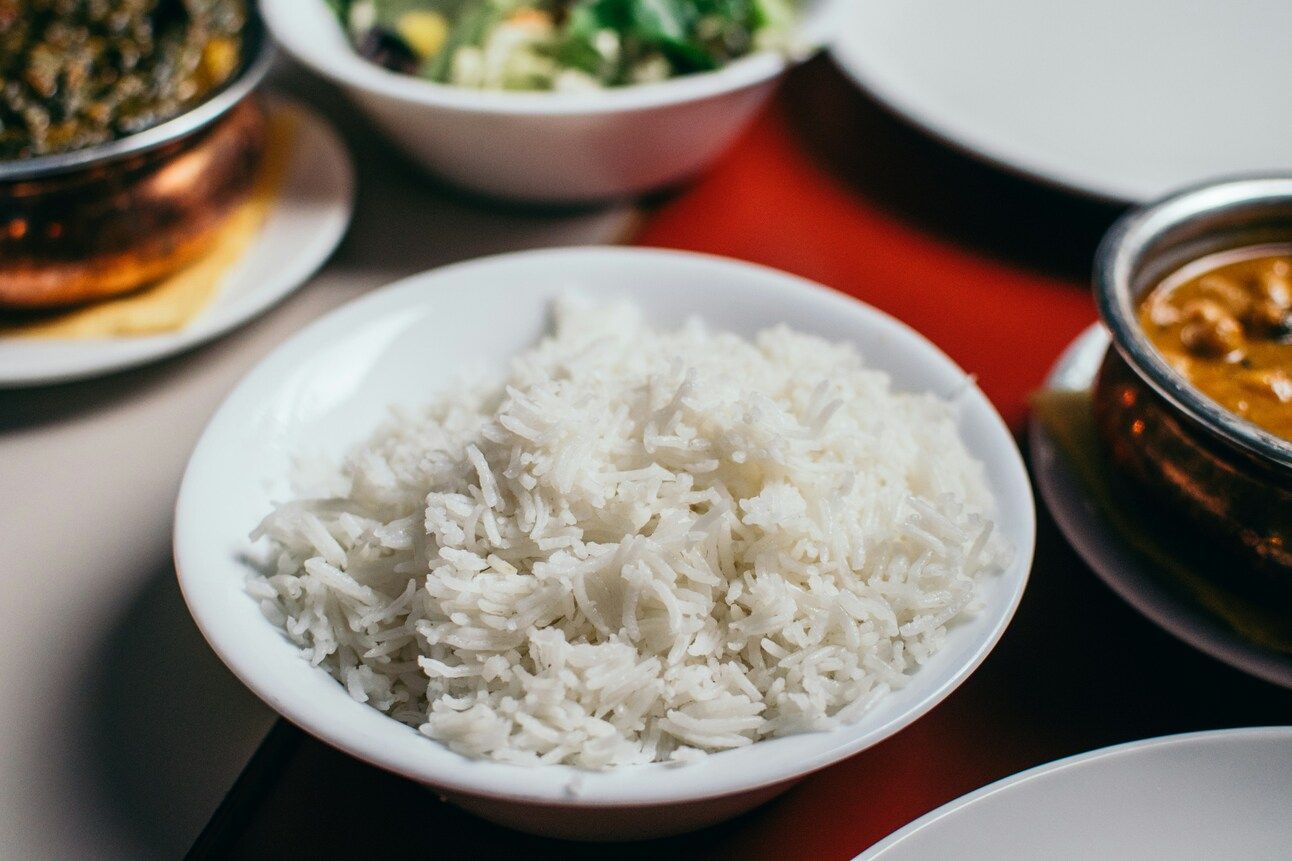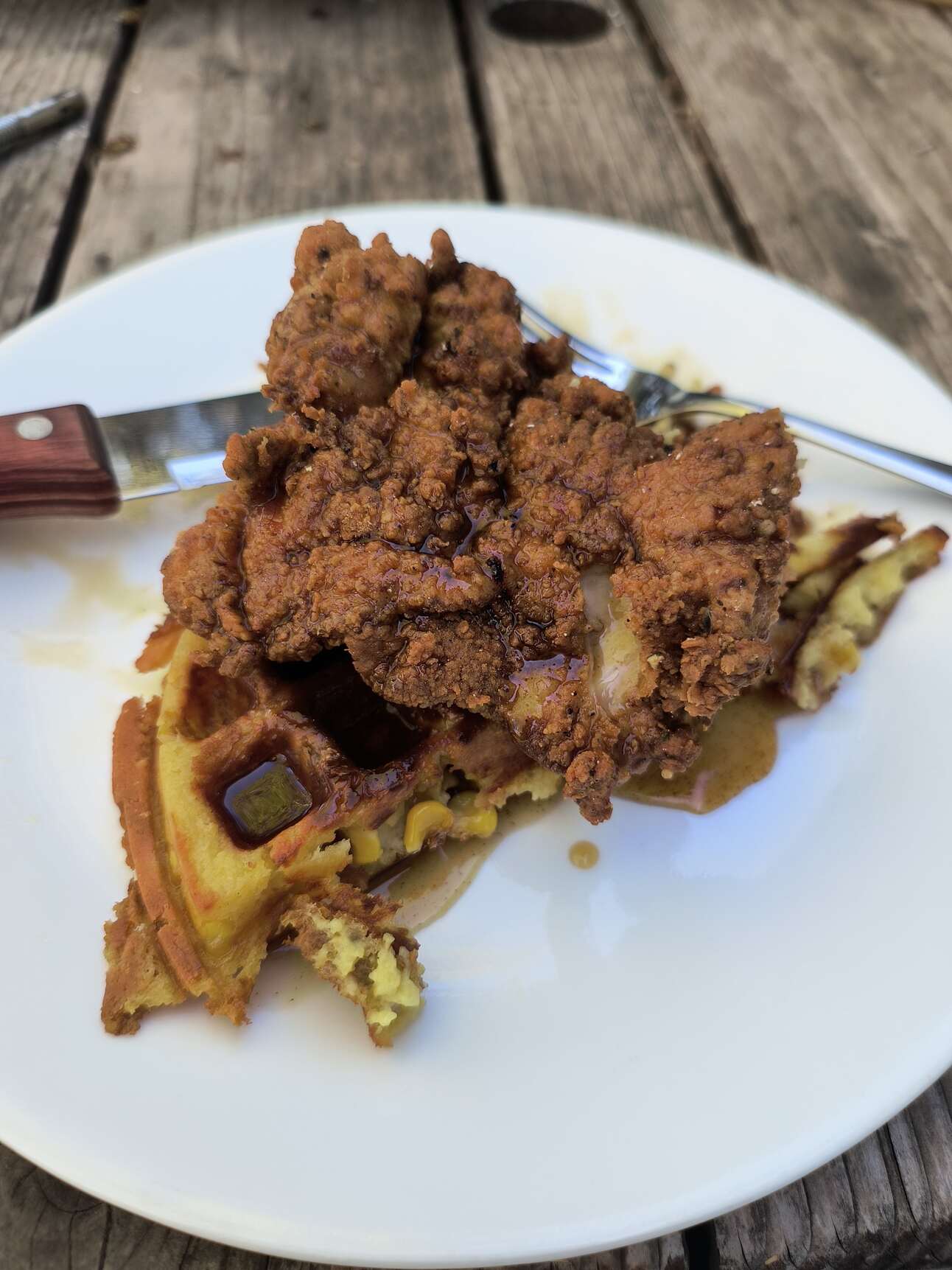- The Mouthful
- Posts
- The Scrambled Egg Matrix
The Scrambled Egg Matrix
to nail your ideal texture. + Thai vs American Red Bull, rice cooking methods, and more

Good morning. Last week, we covered the bibimbap framework. This week is all about scrambled eggs and how to cook them to your desired consistency.
Reply to let us know: Do you have an interesting way of making eggs? We’re curious.
TECHNIQUE BREAKDOWN🤯
The scrambled egg matrix

Medium soft texture with larger curds, achieved by controlling temperature and agitation.
Scrambled eggs can be made into many different textures: wet and runny, fluffy, or even rubbery. This is determined by the curd size, tenderness of the curd proteins, and the retained moisture in the finished scrambled eggs.
Learn the 4 variables of egg cooking
Without getting into the science of protein coagulation, all you need to understand is the four variables that help you dial in your perfect consistency:
Egg temperature (like a steak, when you pull eggs from the pan matters a lot)
How heat is applied (hot & fast vs low & slow)
Agitation (lots of stirring vs minimal stirring)
Added ingredients (salt, butter, cream, cornstarch slurry, etc)
What you’ll need
Cooking fat of choice (butter, oil)
Eggs
Salt
Optional texture adjusters (butter, creme fraiche, milk, cornstarch slurry, etc)
How to make them
1 — Salt & beat eggs: Adding salt before cooking, not after, helps with tenderness and moisture retention. Beat or whisk eggs until smooth.
For fluffier eggs, add in milk or water at this stage. The extra moisture will help steam and fluff up the protein structure.
For richer eggs, add in fattier additions like cream or extra butter.
2 — Choose your heat application style: For tender eggs, lower heat will prevent the eggs from going tough. Some people even use a double boiler for French style soft scrambles.
For quick but medium texture eggs, you’ll want the pan around the boiling point of water 212°F/100°C, which is when butter or water begins to gently bubble in the pan.
For extra fluffy eggs, you can cook them hot and fast. The high heat will create rapid steam which will expand through the eggs.
3 — Control agitation: More stirring means smaller, denser curds. Less stirring gives you large pieces of curds.
4 — Finish the eggs: Pull them before your desired texture, since carryover cooking will continue to set the eggs. Optionally stir in extra texture or flavor adjusters like creme fraiche, butter, or herbs. Garnish and serve.
To fully understand all of these variables, check out the full video guide.
RECIPE RECOMMENDATIONS ✅
Egg dishes

Use the egg knowledge you learned above to nail perfect eggs in more than just scrambled applications. Check out all of our egg dishes here:
FOOD TRENDS 🚀
Thai vs American Red Bull

Why is the original Thai version of Red Bull so different from the US versions?
Red Bull originated in Thailand, created by a pharmacy owner who wanted to make the ultimate energy drink. He called it Krating Daeng, which means "red bull" in Thai. This version of Red Bull is uncarbonated and has less sugar than the Red Bull most people know today.
During a visit to Thailand, an Austrian businessman, Dietrich Mateschitz, discovered the drink and found it cured his jet lag. Believing it would succeed in Western markets, he partnered with the Thai creator to bring a modified version of Red Bull to the West.
The two operate as separate companies, serving separate markets. Red Bull took off in Europe in the 90s and made its way to America by the late 90s, maintaining popularity decades later thanks to its strong brand identity & marketing (human element of flavor at play).
Have you heard of Thai Red Bull? |
READER Q&A 🧠
No rice cooker, no problem

Many methods can yield nicely cooked rice.
Question: “Do you have to have a rice cooker to make good rice at home?” - Danielle
Answer: Rice cookers are convenient, but not necessary to nail perfect rice at home. Here are 3 other methods you can try:
1 — Boil rice like pasta: works for all rice types and is surprisingly foolproof.
No need to measure things out. Just add rice to a pot of boiling water, test periodically until the rice is cooked through, drain, then fluff. Unconventional method but yields perfect rice!
2 — Stovetop method: This one is actually the easiest to mess up, but necessary with recipes that require toasting the rice or cooking flavorful ingredients with the rice (aromatics, broth, spices, tomatoes, etc).
Add ~1.25 parts liquid to the rice. Bring to a boil and stir for 2-3 minutes until rice is fully hydrated. Turn off the heat, cover the pot with a towel and lid, and allow to steam for 15 minutes.
3 — Oven baked: Hands off, great for large quantities, or when you need the stovetop.
Put rice in an oven safe dish with & cover with water (~1.2 parts water), seal tightly with foil. Bake in a 350-400 oven until the water is evaporated (usually 25-30 mins). Fluff & serve.
Check out more details on these methods in our written Rice Cooking Guide.
Have a culinary question? Reply to send it in for a chance to be featured and get your question answered.
WINNING READER SUBMISSION 🏆
Chicken & waffles
This week’s dinner winner is Michael W., who made fried chicken & cornbread waffles with spiced maple syrup.

Reply with your best home-cooked food photos for a chance to win & be featured!
EXTRA HELPINGS 🍽️
A read: How to Throw an Oyster Roast
In a minute or less: A Restaurant's Goldfish Cracker
What we’re watching: Wok Cooking 101
Food science: Caramelization
The Cook Well app is happening: Thank You!

Was this forwarded to you? Subscribe here.
Not reaching your inbox? Try this.
Need more inspiration? View the newsletter backlog.